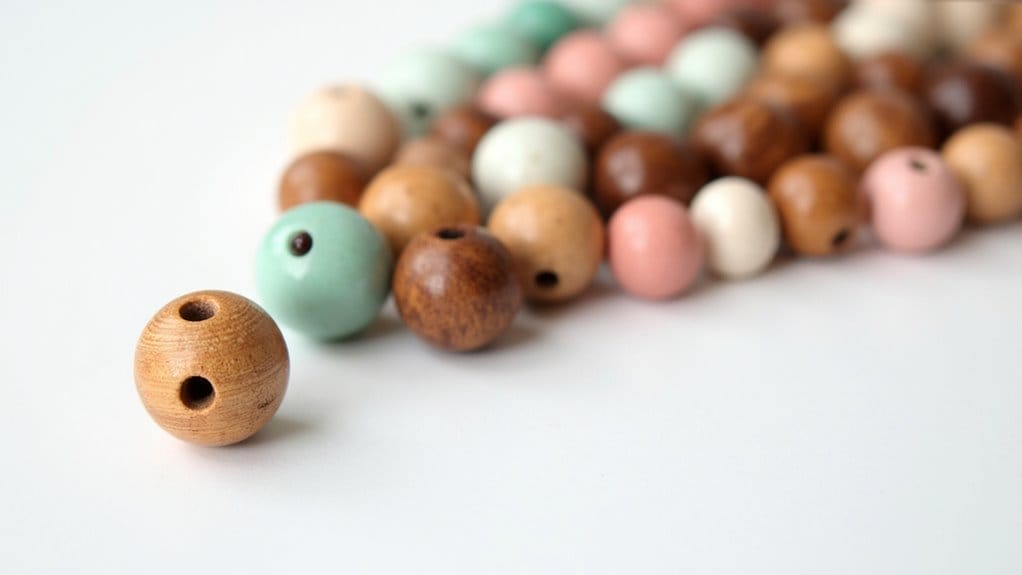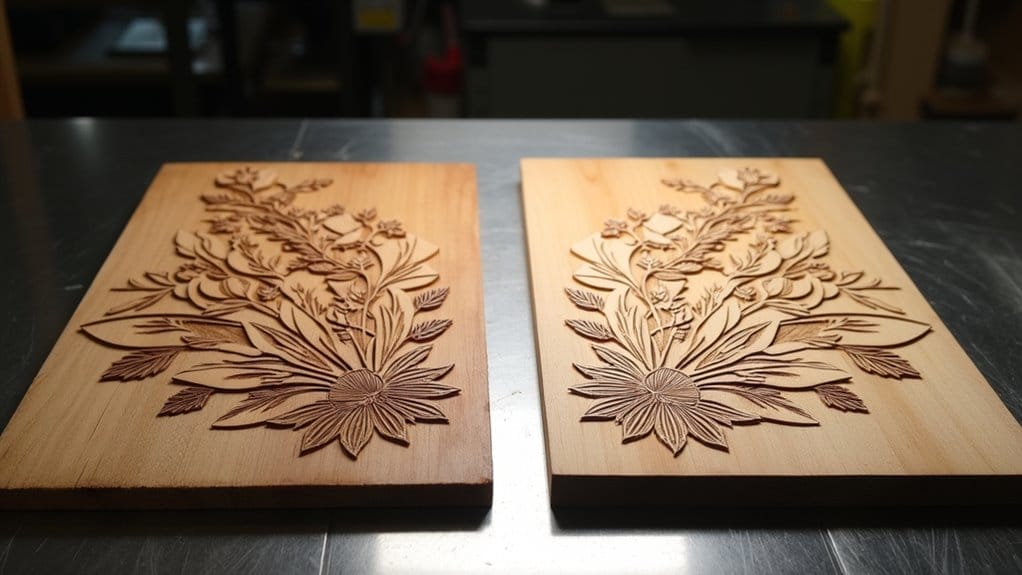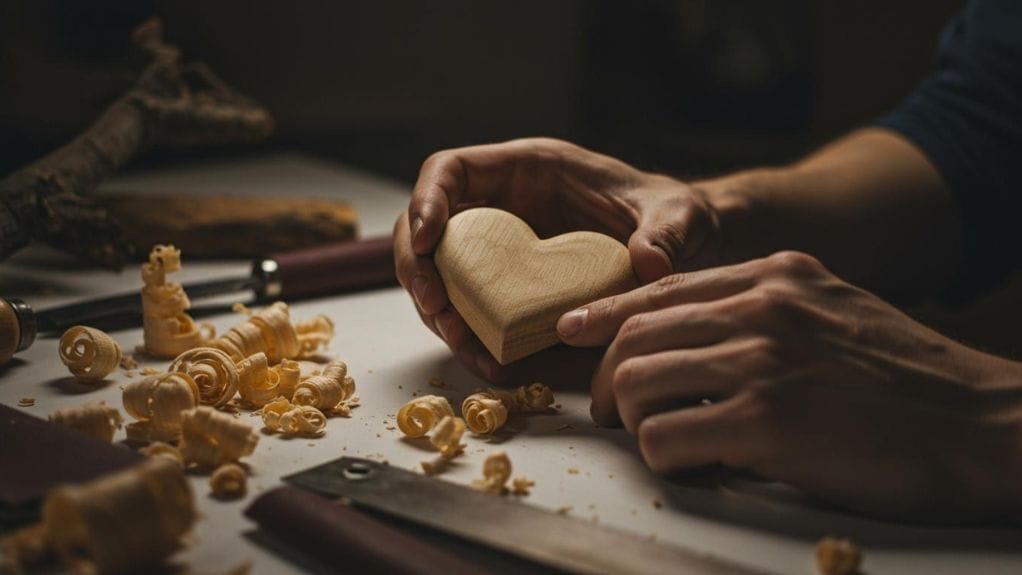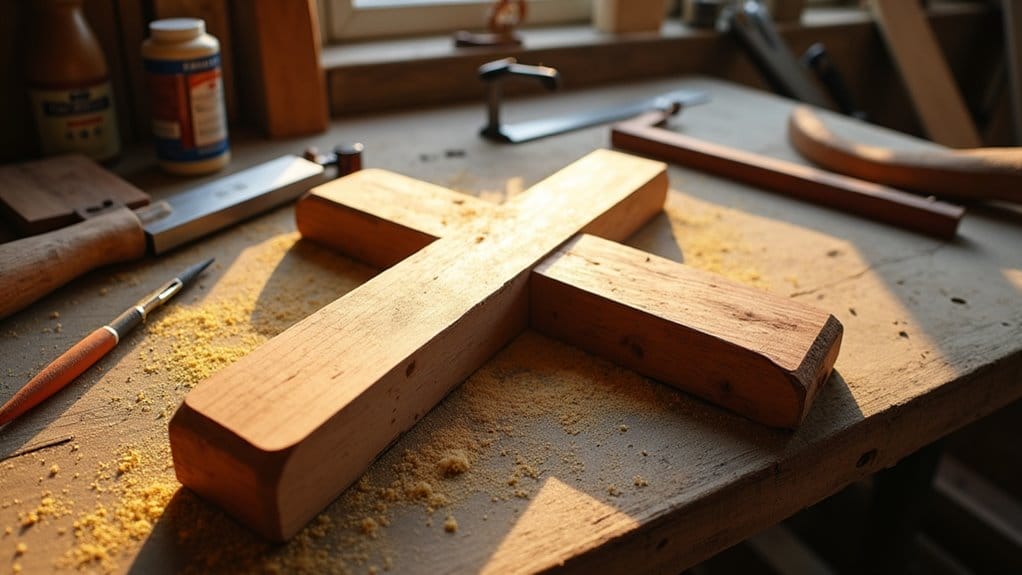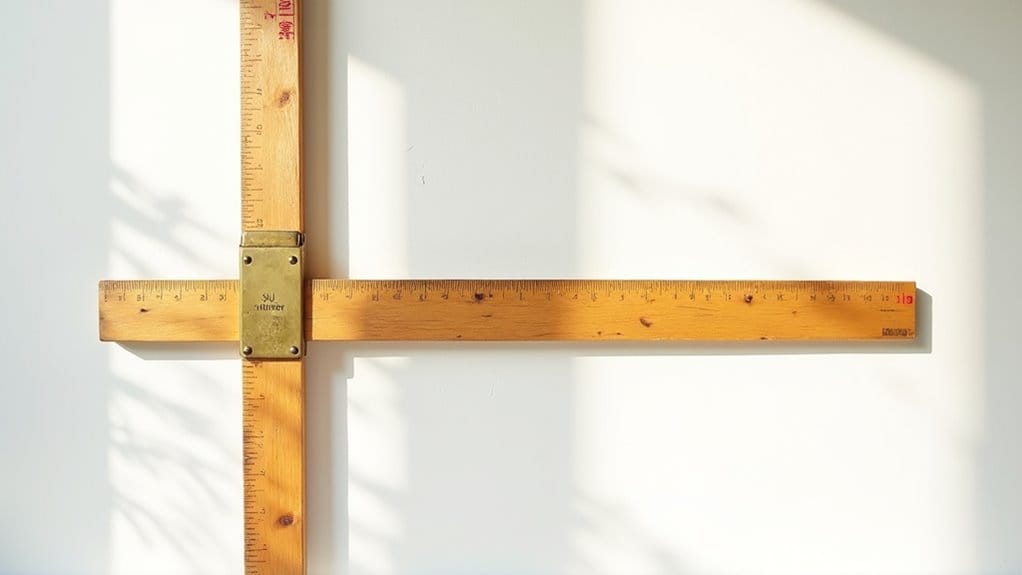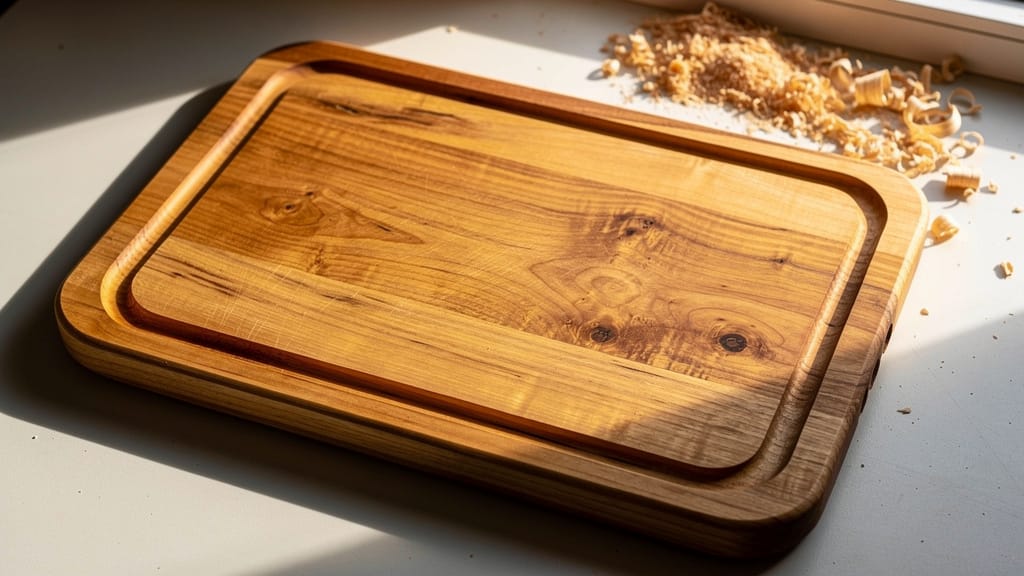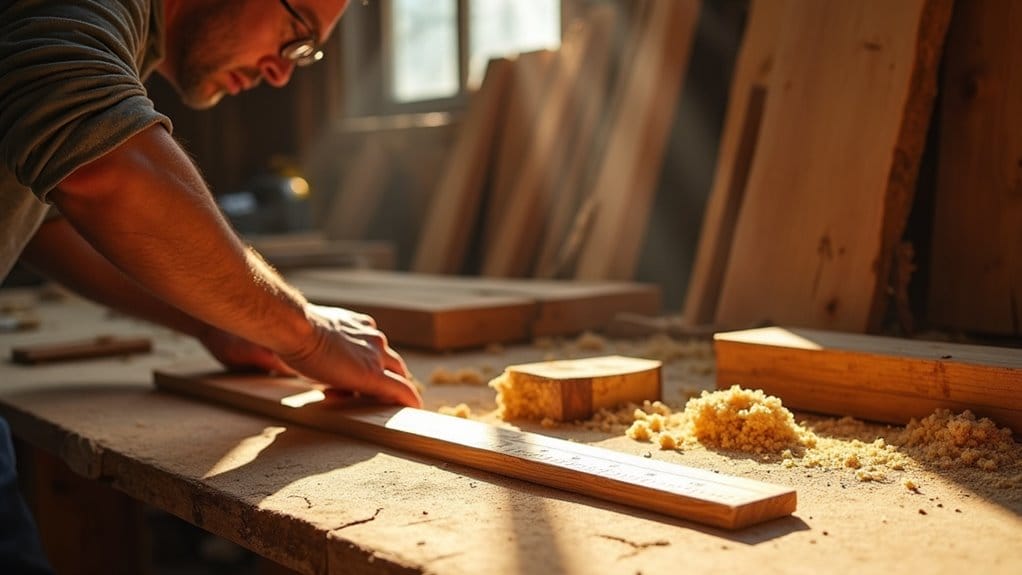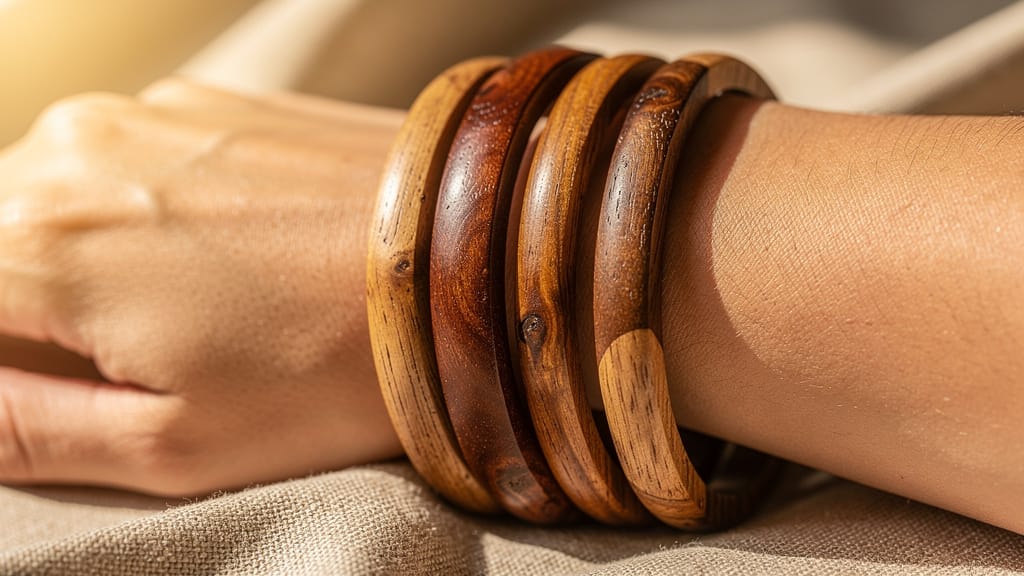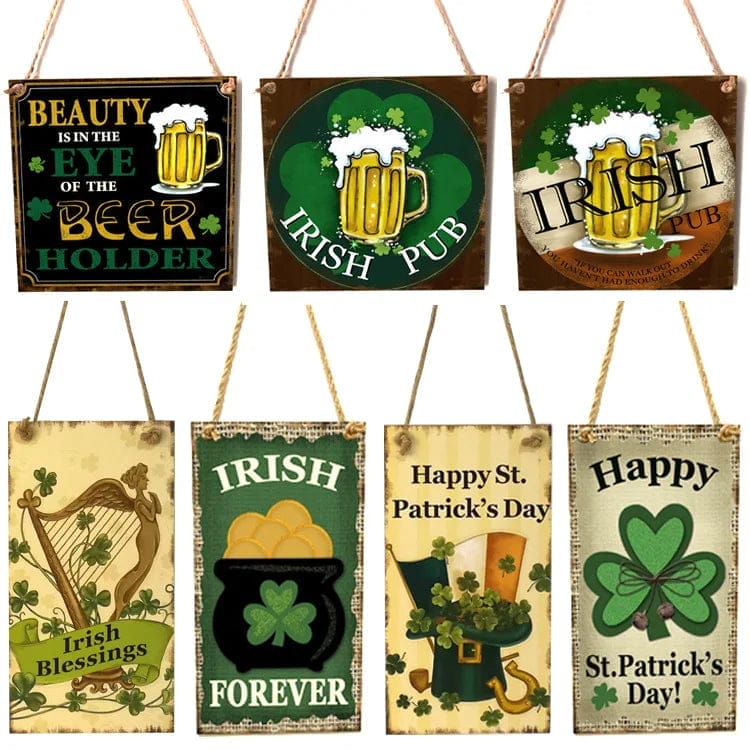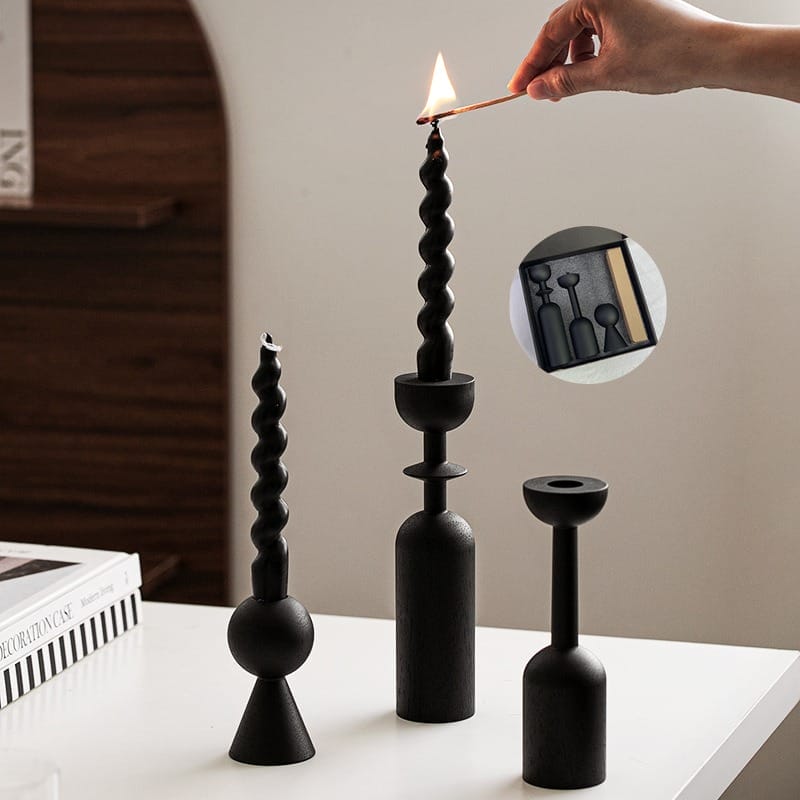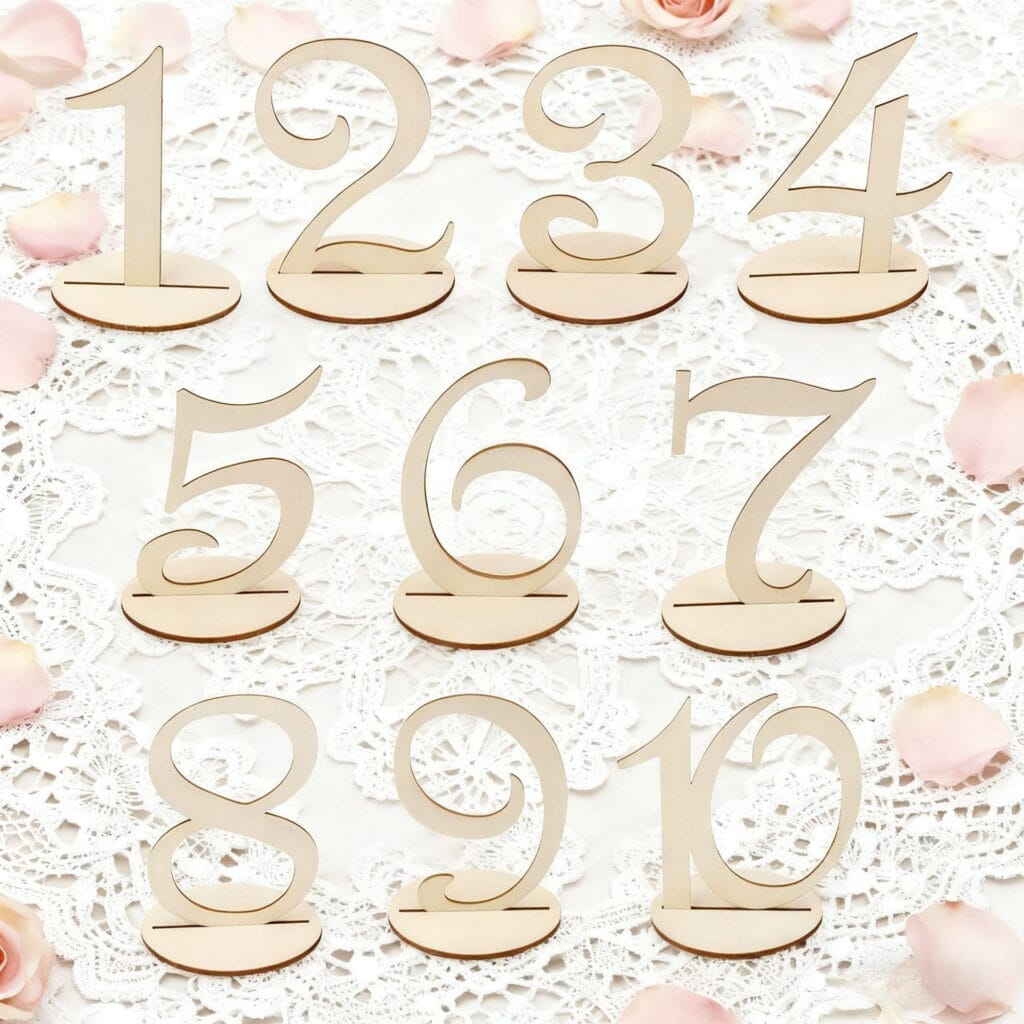When you’re sourcing wholesale wood beads, you’ll encounter a complex matrix of specifications that can impact your final product’s quality. From the precise 4mm to 25mm diameter ranges to the critical hole tolerances that determine stringing success, each parameter demands careful consideration. You’ll need to navigate color stability ratings and trending schemes while ensuring your chosen beads meet both aesthetic and functional requirements. Let’s examine these essential factors to optimize your selection process.
Key Takeaways
- Wood beads range from 4mm to 25mm diameter, with 8mm-15mm being most popular for jewelry and larger sizes for statement pieces.
- Hole tolerances require 0.5mm-1mm clearance beyond stringing material thickness, with 0.2mm variations potentially impacting project success.
- Current trends favor earth-toned neutrals, coastal blues with sandy beiges, and monochromatic gradients for 2023-2025 designs.
- Seasonal colors include spring pastels and natural pine, transitioning to deep mahogany and walnut shades for autumn/winter collections.
- Quality wholesale wood beads should achieve a minimum colorfastness rating of 4 on a 1-5 scale for lasting vibrancy.
Why Choose Wholesale Wood Beads to Upgrade Your Product Line?

When evaluating materials for jewelry and craft supplies, wood beads offer distinct advantages that make them an attractive wholesale option. Their natural composition provides consistent quality across large batches, while maintaining a lightweight profile that reduces shipping costs. Furthermore, wood beads can be easily finished with various coatings and stains, allowing for customization that appeals to different tastes and styles. Learning how to produce wooden beads can also be a rewarding craft, providing artisans with the ability to create unique pieces that stand out in the market. Their versatility in design extends beyond traditional jewelry, making them suitable for a wide range of creative projects.
You’ll find wood beads deliver excellent value-to-price ratios for your product line.
Your choice of wood beads addresses growing consumer demand for sustainable materials. These versatile components accept stains and finishes uniformly, enabling precise color matching.
For wholesale buyers, wood beads offer predictable inventory management with minimal defect rates and standardized specifications that meet strict quality control requirements. Low defect rates ensure consistent quality.
Understanding Size Gradients of Wood Beads

Wood beads typically range from 4mm to 25mm in diameter for wholesale purchases, with the most popular sizes falling between 8mm and 15mm for jewelry applications.
You’ll find that larger beads (16mm-25mm) work best as statement pieces or focal points, while smaller beads (4mm-7mm) are ideal for delicate designs and spacer elements.
The bead’s size directly impacts your stringing options, with 1mm-2mm holes in smaller beads requiring thin cording or wire, and 3mm-4mm holes in larger beads accommodating leather, ribbon, or multiple strands.
Common Sizes Available in Bulk
Bulk wood beads come in standardized sizes ranging from 4mm to 30mm in diameter, with the most popular wholesale options falling between 6mm and 20mm.
You’ll find a great supply variety in 8mm, 10mm, 12mm, and 15mm sizes, which are commonly used in jewelry making and craft projects.
For high-volume orders, these wood beads typically come packaged in 100, 500, or 1000-piece lots.
The size consistency within each batch maintains a tolerance of ±0.5mm.
When ordering in bulk, you can specify mixed-size assortments or single-size packages to meet your specific project requirements.
How Size Affects Jewelry Making and Design
The strategic selection of bead sizes directly impacts the visual balance and wearability of jewelry designs.
When crafting necklaces, you’ll find that 8mm beads work well for delicate pieces, while 12-15mm beads create bold statements. Size gradients allow you to shift smoothly between different bead diameters, creating visual flow and professional finish.
Consider how larger beads (20mm+) add weight that affects drape and comfort, while smaller sizes (4-6mm) provide intricate detail work.
Your jewelry’s structural integrity depends on selecting sizes that complement connecting components like clasps and spacers. Match bead sizes to your target market’s preferences and wearing habits.
Hole Tolerances for Wood Beads

Precise hole tolerances in wholesale wood beads directly impact your stringing options and overall project success.
You’ll need holes ranging from 0.5mm to 3mm for basic jewelry cord, while macramé and larger rope projects require 3mm to 8mm diameter holes.
When selecting wood beads for your craft projects, verify that the hole diameter provides 0.5mm to 1mm of clearance beyond your stringing material’s thickness to guarantee smooth threading and proper movement.
Importance of Hole Size in Bead Selection
Selecting wood beads with proper hole tolerances directly impacts your project’s success and stringing efficiency.
You’ll need to make sure the holes accommodate your stringing material without excess play or binding. Use calipers to verify hole diameters match your specifications before bulk ordering.
Different projects require varying tolerances – leather cording needs larger holes than elastic or wire.
When working with unfinished beads, factor in how surface treatments might affect hole dimensions.
Consider that hole size variations of even 0.2mm can notably impact your project’s outcome, especially in jewelry making where precise fit is fundamental.
Recommended Hole Sizes for Different Craft Projects
Four primary categories of wood bead hole sizes correspond to specific craft applications:
- 1-2mm for fine jewelry and delicate stringing materials,
- 2-3mm for standard jewelry and basic crafts,
- 3-4mm for macramé and leather work, and
- 4mm+ for large-scale projects and rope-based designs.
When selecting hole size for your craft supplies, you’ll need to take into account your stringing material’s diameter.
For jewelry making, choose 1-2mm holes for thin wire or elastic cord. Use 2-3mm holes for hemp or waxed cotton. Your material choice affects the overall style and durability.
For chunky necklaces or wall hangings, opt for 4mm+ holes to accommodate thicker cording.
Colorfastness Ratings of Wood Beads

When selecting colored wood beads, you’ll need to verify their colorfastness rating – a measure of how well the dye resists fading from exposure to light, washing, and friction.
You can test colorfastness by rubbing the bead with a white cloth under moderate pressure to check for dye transfer, or by exposing sample beads to UV light for 24-48 hours to assess light resistance.
Quality wood beads should maintain their vibrancy with minimal color bleeding or fading, achieving a minimum rating of 4 on the standard 1-5 colorfastness scale used in textile and craft materials testing.
What is Colorfastness and Why It Matters
Colorfastness measures how well dyed wood beads retain their color when exposed to water, light, heat, and friction.
You’ll find this critical for maintaining high quality appearance over time, especially in jewelry making and craft projects. The finish and polish of your wood beads depend heavily on proper colorfastness ratings.
Poor colorfastness can result in color bleeding, fading, or transferring onto skin and clothing.
When selecting wholesale wood beads, check their colorfastness rating on a scale of 1-5, with 5 being excellent. Higher-rated beads maintain their vibrancy through washing, UV exposure, and regular wear, ensuring your finished pieces remain aesthetically appealing.
Evaluating the Quality of Dye in Wood Beads
Testing a wood bead’s dye quality involves three key evaluation methods: the rub test, water immersion test, and light exposure assessment.
To evaluate rub resistance, firmly press a white cloth against the bead’s surface – quality dyes won’t transfer color.
For water testing, submerge beads for 24 hours to check color stability.
The light test requires exposing beads to direct sunlight for 72 hours to verify fade resistance.
When you choose beautiful wood beads, look for those with consistent, popular colors that pass these quality checks.
High-grade dyes penetrate deeply into the wood’s grain, ensuring lasting vibrancy through regular wear and environmental exposure.
Popular Color Schemes for Wooden Beads

Popular wood bead color schemes follow current jewelry design trends, with neutral ombre combinations and earth-toned gradients dominating bracelet and necklace projects.
You’ll find seasonal variations driving color selection, as spring/summer designs feature light pastels and whitewashed finishes, while autumn/winter schemes incorporate deep mahogany, walnut, and aged bronze stains.
Decorative bead chandelier designs typically showcase monochromatic palettes with 3-5 coordinating wood stain variations, ranging from natural pine to ebony finishes.
Trending Color Combinations for Jewelry Making
Three dominant color combinations have emerged as top choices for wooden bead jewelry in 2023-2025: earth-toned neutrals, coastal blues paired with sandy beiges, and monochromatic gradients.
When building your collection, consider these trending combinations:
- Warm walnut beads with golden oak accents, creating depth in bracelet designs through 3-4 complementary brown tones.
- Weathered driftwood gray paired with oceanic blue tones (20% light, 60% medium, 20% dark selection ratio).
- Single-color gradient progressions featuring 5-7 sequential shades of one hue, commonly seen in 8mm-12mm bead sizes.
These palettes offer maximum design flexibility while maintaining current market appeal.
Seasonal Color Inspirations for Bead Garlands and Chandelier Designs
Seasonal shifts drive the market demand for distinct wooden bead color palettes in home décor applications.
For spring/summer bead garlands, you’ll find bleached white, sage green, and natural pine round wooden beads creating an airy aesthetic.
Fall designs incorporate amber, chestnut, and deep walnut tones, perfect for rustic chandelier arrangements.
Winter themes favor stark contrasts between Nordic white and charcoal finishes, while coastal décor trends maintain year-round appeal with weathered gray and driftwood tones.
When selecting decorative beads for seasonal installations, consider how finishes interact with ambient lighting to enhance dimensional depth and visual texture.
Crafting with Wood Beads

You’ll discover endless creative possibilities with wooden beads by incorporating them into handcrafted jewelry designs, from simple strung necklaces to intricate macramé patterns. Exploring different colors, shapes, and sizes of wooden beads can lead to unique and personalized creations that reflect your individual style. Additionally, decorating with wooden beads can enhance home decor projects, such as wreaths or garlands, adding a touch of natural beauty to any setting. The versatility of wooden beads allows for endless experimentation, making each piece truly one-of-a-kind.
When crafting bracelets, you can combine different bead sizes (6mm-20mm) with complementary materials like leather cord, hemp, or elastic stretch cord to achieve various styling effects.
Your custom wooden accessories can feature geometric patterns, gradient arrangements, or mixed media elements by strategically spacing beads with metal findings, crystals, or natural stone accents.
Creative Ways to Use Wooden Beads in Jewelry
Wooden beads offer endless possibilities for creating distinctive jewelry pieces that combine natural beauty with artistic expression.
You’ll find it easy to incorporate these versatile elements into your designs by following specific techniques.
Mix low-profile beads with larger geometric shapes to create dynamic visual interest – ideal spacing between beads should be 2-3mm.
Layer different bead sizes (6mm, 8mm, 12mm) in graduating patterns, maintaining 1.5mm minimum hole tolerances for secure stringing.
Combine unfinished and stained wood beads in complementary earth tones, using precise color matching to achieve professional results.
Proper bead selection and arrangement guarantees structural integrity while maximizing aesthetic appeal.
Making Unique Bracelets and Accessories with Wood Beads
Building on these foundational jewelry techniques, crafting distinctive bracelets and accessories requires specific tools and precise measurements for professional results.
You’ll need high-quality elastic cord with a 0.8mm-1mm thickness for ideal bead stability. Select beads with excellent hole tolerances of 2-3mm to prevent shifting.
For exclusive designs, combine available wood finishes in 6mm, 8mm, and 10mm gradients.
Calculate your wrist measurement plus 0.5 inches for proper fit.
Double-knot your elastic cord using clear adhesive, allowing 24 hours to cure completely.
Test tension by stretching gently before wearing to confirm bead security.
Frequently Asked Questions
What Is the Average Lifespan of Properly Stored Wholesale Wood Beads?
You’ll find properly stored wood beads last 15-20 years when kept at 40-50% humidity, away from direct sunlight, and maintained at temperatures between 60-75°F (15-24°C) in sealed containers.
How Do Different Wood Species Affect the Weight of Beads?
You’ll find that denser woods like ebony (1.2g/cm³) create heavier beads, while lighter species like balsa (0.16g/cm³) produce considerably lighter ones. The weight difference can be up to 7.5 times.
Can Wood Beads Be Safely Used in Water-Based Jewelry Projects?
You shouldn’t use untreated wood beads in water-based projects, as they’ll absorb moisture, swell, and potentially crack. If you need water resistance, seal them with polyurethane or choose marine-grade sealed wooden beads instead.
What Packaging Options Are Available for Bulk Wood Bead Orders?
You’ll find bulk wood beads packaged in resealable poly bags, cardboard boxes with dividers, vacuum-sealed pouches, or mesh storage sacks. Custom packaging with your branding is also available for large-quantity orders.
Are There Specific Tools Recommended for Stringing Large Quantities of Wood Beads?
You’ll need bead reaming tools, flexible beading needles, and a bead board for organization. Consider using needle-nose pliers, wire cutters, and cord threaders to efficiently string large quantities of beads.
Conclusion
Wood beads’ specifications now offer you enhanced versatility in product development. You’ll find precise size gradients from 4-25mm, with ideal hole tolerances of ±0.5mm for standard stringing materials. Current colorfastness ratings exceed 4.5 on the gray scale, ensuring durability across seasonal collections. When you’re selecting inventory, focus on earth-tone palettes and pastel ranges, which dominate current market demands.

